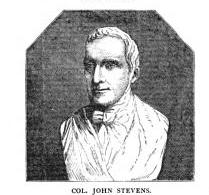
Carl Kriegeskotte Puts the Screws to
a Significant
1804 Leap of Technology
In August, 1807, Robert Fulton's "North River
Steam Boat," commonly called the Clermont, left the dock in
Manhattan and headed
150 miles upstream to Albany at an average speed of 4.7 miles per hour. Armed with a State of New York
monopoly
and a great promotion campaign, she quickly became a commercial success.
Sporting side-wheels, the boat had a boiler
with an operating pressure of just five pounds per square inch above atmosphere,
as
was common practice in those days. The engine was built by James Watt and
modified for marine use.
This epic event was widely reported and treasured in all school history books. There is no doubt that Robert Fulton was an exceptional man.
However, three years earlier, Col. John Stevens had begun operating a steamboat from The Battery on the tip of Manhattan to Hoboken, New Jersey.
His boat was even more exceptional in that it had a pair of counter-rotating screw propellers, a tubular boiler operating at the then unheard-
of pressure of 58 PSI, and a cruising speed of 8 miles per hour. New York City residents would crowd the dock daily to watch the boat dash across.
Undoubtedly, this was the 1804 technological equivalent of the modern stealth fighter aircraft! But, have you ever heard of John Stevens?

Here are a few prints of his boat, boiler and engine (note the three-cornered hats):
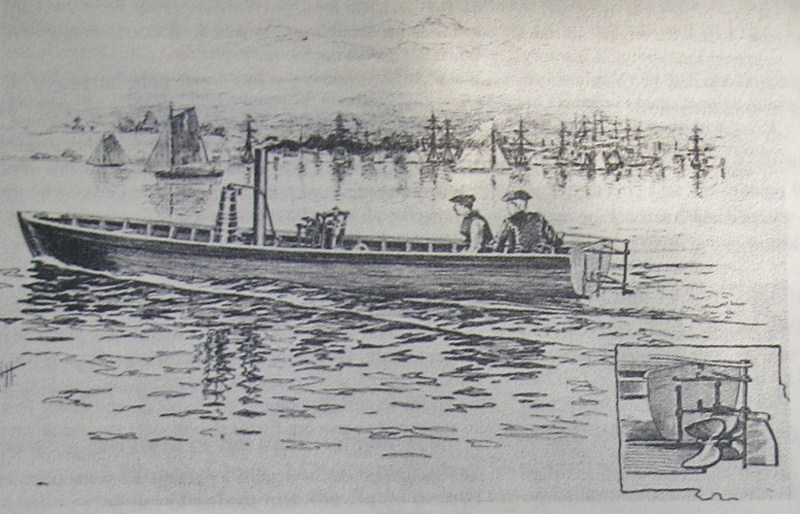

Boiler, engine, and props taken at the Stevens Institute
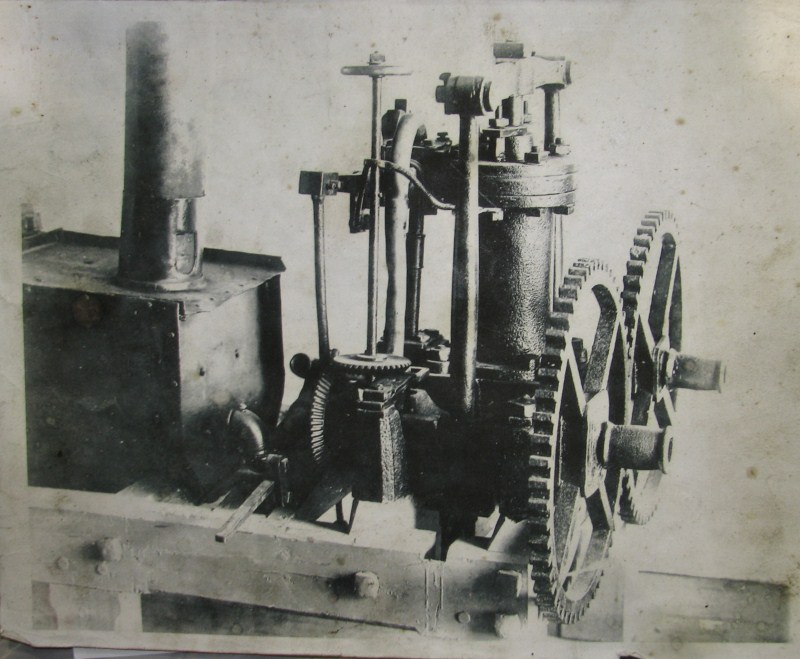
Original engine is now at the Smithsonian in Washington, D.C.
John Stevens and his sons did go on
to design and operate many vessels, some commercially very successful. In
addition,
he predicted many of the attributes of steam and modern railroad locomotive
practice. Look him up on Google Books. You'll be amazed!
Now here comes the fun!
Carl Kriegeskotte, who is a very clever engine designer and builder,
has built an operating replica of the engine, entirely without plans.
He has thoroughly researched this engine and sought the advice of Ray Hasbroucke
and others to keep this engine as accurate a replica as possible.
It has noisy square-cut gears as on the original; square head bolts and nuts; a bevel gear driven slip
eccentric reverse; and rack and pinion operated double-acting
semi-rotary valving, all just as in the original. At a time when engineering, machining and tolerances were crude, this engine
stands out like no other.
Not only does it work, it runs beautifully.
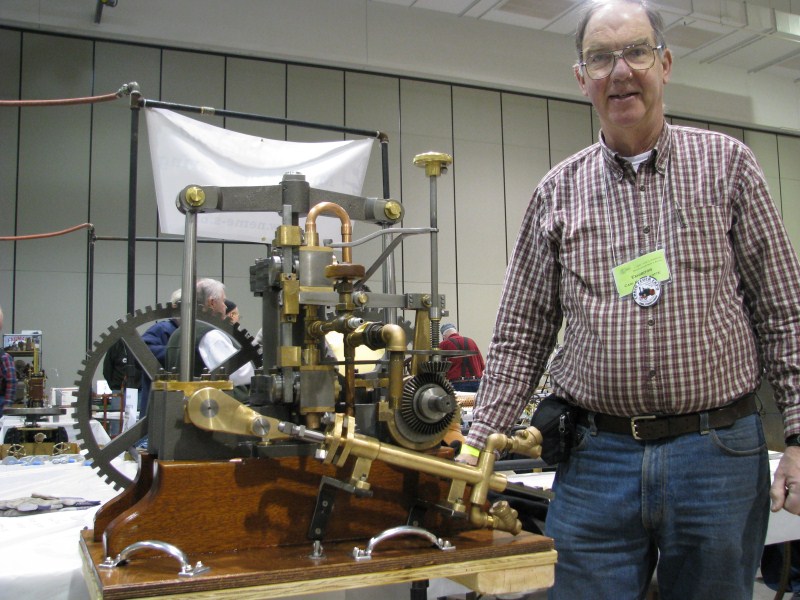
Carl and his 1804 Stevens Engine

View of front of engine from left side. Note the
bevel pinion gearing for the slip
eccentric.
The water pump is mounted ahead of the engine.
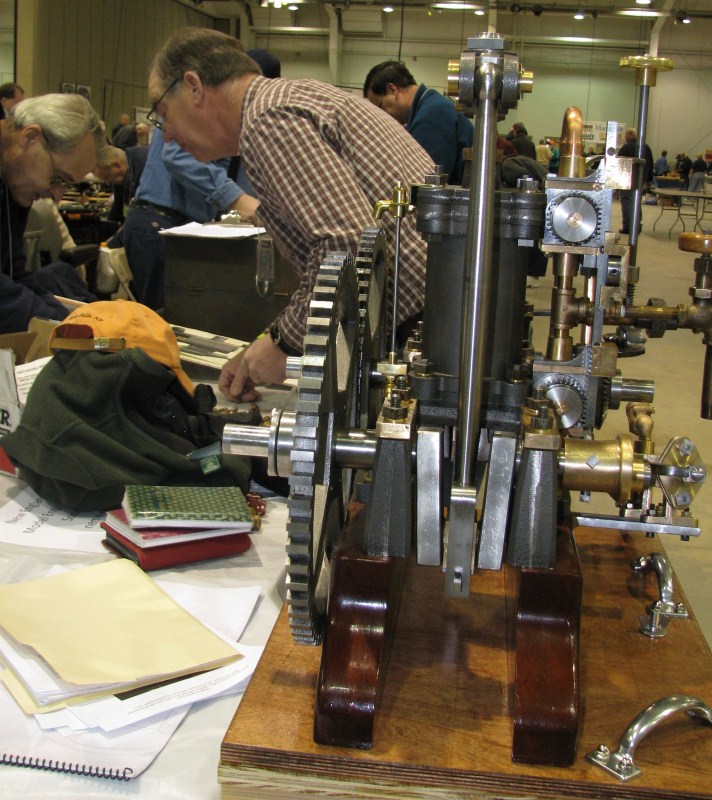
View of engine from the right side. Note the rack and pinion driving the semi-rotary valves
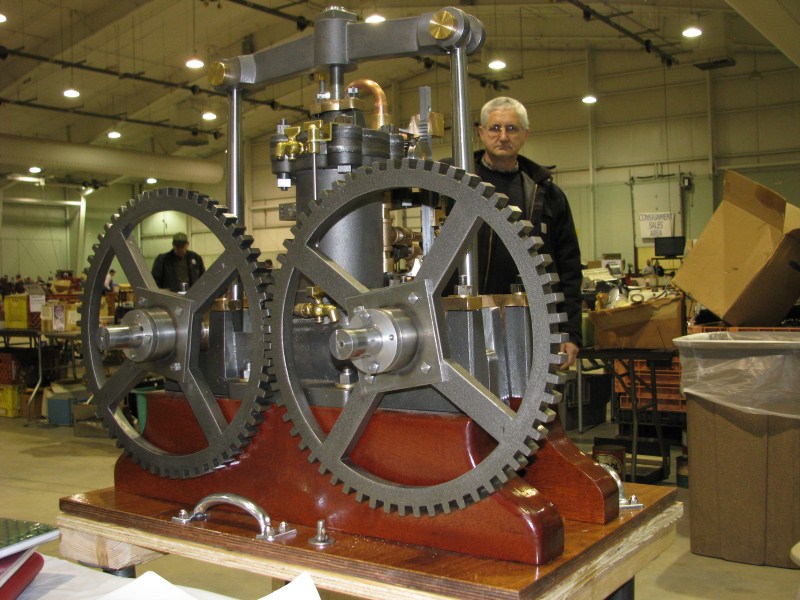
Betcha Carl had lots of fun making these square-cut gears!!
Click on the image below to see and HEAR this engine running at Cabin Fever Expo:
Carl will be installing this engine
in a Whitehall-type hull to complete the Stevens project.
I don't know about you, but I can hardly wait to see it in operation.
We'll be following the story in Steamboating Magazine.